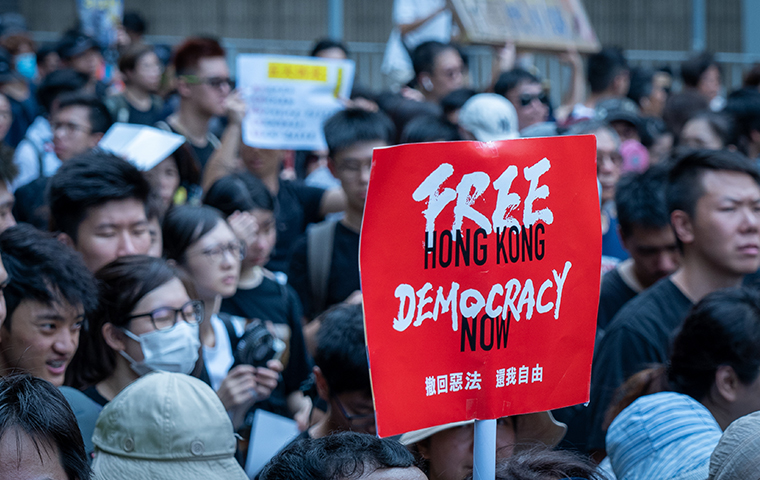Readings from Former BOJ Governor Shirakawa’s British Parliament Testimony
Related Articles

BOJ Sustains Ultra-Easy Monetary Policy by Referring to Unrevised Textbook
Will the U.K. follow Japan into a downward spiral of low growth and low inflation despite continued quantitative easing (QE)? Former Bank of Japan (BOJ) governor Masaaki Shirakawa gave thoughtful and honest answers to the keen inquiries from the monetary policy experts in the House of Lords.
On April 20, the British Parliament’s House of Lords Economic Affairs Committee invited former BOJ governor Masaaki Shirakawa as a witness. The Members of the House were concerned of the consequences if QE, also implemented in the U.K., becomes prolonged like in Japan.
The House of Lords currently has many members well versed in economic issues, including former Bank of England (BOE) governor Lord Mervyn King. In response to the series of high-quality questions from these policymakers, Shirakawa spent about an hour responding in detail. His answers turn out to be most intriguing, since they include numerous substantial issues on ultra-easy monetary policy that the current BOJ has avoided by turning a blind eye.
When I featured Shirakawa’s question-and-answer session in my newsletter for financial institutions and institutional investors, I received a great deal of sympathetic response.
Many players in the financial market are strongly concerned about the negative effects of the prolonged ultra-easy policy the BOJ cannot quit. Below is the summary of my interpretation of Shirakawa’s testimony.
Japan’s Lifetime Employment
– Why didn’t inflation ignite in Japan even with QE?
Shirakawa: Globalization and technological progress from the IT revolution caused inflation decline in many countries, including Japan. Declines occurred in all countries simultaneously. The difference today reflects each country’s initial state of inflation.
Japan recorded a slightly negative figure because the initial inflation rate was very low. A factor unique to Japan is the lifetime employment practice. When the economy faced a severe negative demand shock, Japanese business owners prioritized keeping employment. In return, employees have accepted low wage rise or even an absolute decline in wages. That is one of the most important reasons why we are seeing a combination of a very low unemployment rate in international comparisons and subdued wage and inflation rates in Japan.
However, some insist that if the central bank takes a determined attitude to affect inflation expectations, the actual inflation rate will rise. Do you really believe in that kind of story?
It is easiest to understand with an actual experience. Professor Lawrence Summers of Harvard University recently said,
“The utter failure of the Bank of Japan’s extensive efforts to raise inflation suggests that what was previously treated as axiomatic is in fact false: central banks cannot always set inflation rates through monetary policy.”
(Author’s note: In spring 2013, BOJ announced that if it doubles the monetary base balance in two years to about 270 trillion yen, it can realize the 2% inflation target. The balance exceeded 650 trillion yen, but the 2% inflation target is way off.)
Zombie Corporations Kept Alive
We have to take this experience seriously, and go back to monetary policy basics. The impact of monetary easing is bringing future demand to present by lower interest rates. This strategy will function if the economic shock is temporary.
Yet, it will not be effective on structural issues, such as demographic changes from declining population due to rapid aging and low birth rates, or falling productivity caused by labor practices that lack flexibility amid globalization and IT revolutions.
Nevertheless, if monetary easing is prolonged, the effect of front-loading future demand will inevitably decrease. Tomorrow will become today. As the future demand to be brought forward becomes scarce, the ratio of productive investment will also decline. When the aggressive easing policy continues to narrow credit spreads (interest rate difference based on the issuer’s credit), the credit market will become less efficient, which also lowers productivity. In the end, the so-called zombie corporations live on. (Author’s note: lower interest costs by ultra-low interest rates allow low-profit companies to survive.)
All these factors weaken the private sector’s financing needs. At such times, the government can continue to borrow money smoothly without paying high interests.
(Author’s note: when the private sector’s financing needs become weak, the crowding-out effect that suppresses private investment by higher long-term interest rates is less likely to happen, even if the government issues more bonds to expand public spending. If the government just uses the raised funds for pain-relief measures, the productivity will fall further.)
Should Be Concerned About Productivity Decline
– How great is the risk of soaring inflation after the current global expansionary monetary and fiscal policies?
Shirakawa: Those kinds of risks are somewhat exaggerated. It is difficult to continue fiscal spending at the current scale, and we will eventually face the cliff. I believe there is no persuasive evidence that the factors considered having flattened the Phillips curve (expresses the relation between inflation and unemployment; usually shows declining graph with price increase rate on the vertical axis and unemployment rate on the horizontal axis) such as globalization and technical advancement, have finally changed at this stage.
My current concern is not inflation, but low growth and especially productivity decrease.
I am concerned about productivity decline caused by the combination of prolonged monetary easing and aggressive fiscal policy.
– What would you describe the main purpose of QE to have been in Japan? Did it change through the different phases, moving from QE to QQE (quantitative and qualitative monetary easing)?
Shirakawa: People have different perspectives on the objective of QE, such as to avoid the instability of the financial system, to stimulate economic activities, to prevent deflation, and to prevent the yen’s appreciation. The size of the central bank’s balance sheet does not affect the economy.
But QE was effective as the last lender when the financial system was vulnerable. BOJ took aggressive steps such as the purchase of exchange-traded funds (ETF) and real estate investment trusts (REIT). I support central banks in taking such measures in critical situations. But these methods should be implemented only at times of emergency.
If this condition is not met, the side-effects could become larger and larger. If QE is with us for a long time, central banks become the only game in town. As my friend Lord King is reported to have said, “I would like to get out of that town.”
“Japanification” of the Western Nations

– How close is the monetary policy of the U.S. and Europe with that of Japan since the 1990s? Does QE tend to prolong in advanced countries other than Japan?
Shirakawa: Many advanced economies seem to follow the same path Japan experienced 15 years earlier. Let me point out four similarities: the bubble and the subsequent financial crisis, the prolonged low growth and low inflation that followed, similar easing measures, and overdependence on them, and the late response to the structural issues.
We often hear the expression “Japanification” these days. Economists say policy interest rates are low because the natural rate of interest (the real rate of interest when the economy is neutral) has fallen. I don’t deny the view that the low interest reflects the structural factors of the global economy.
However, that is not a complete explanation. If the effect of front-loading of demand decreases with prolonged easing, and low interest rates allow inefficient firms to stay alive, the potential growth rate and natural rate of interest itself will fall. This will aggravate the situation.
Low interest rates are in part a natural consequence of current monetary policy strategy.
– Some economists say the aging of the population boosts inflation. What is your view?
Shirakawa: Such discussions only see workers as labor. Decrease in the working-age population lowers both labor supply and demand for goods and services. Also, as population decreases, it becomes difficult to sustain public expenditures for maintaining basic infrastructure required by local communities.
We must transfer resources from low population areas to high population areas, but this takes time and, in the meantime, productivity declines. This also impacts growth and price levels. The dynamics that are created by rapid ageing and the declining population are quite complex, which is not well captured by current macroeconomics.
I’m a Student of Friedman
– Is the 2% inflation a correct target?
Shirakawa: I am not a big fan of revising the 2% inflation target. This is neither because I believe that 2% is a right and sacrosanct number nor because it can be achieved if we continue with current monetary easing in earnest.
The reason is that we do not know what the correct number is. Actually, we don’t know how we should handle the inflation figure when we are forming the monetary policy. It is difficult to justify 2%, but also difficult to justify 1% or 3%.
If we are fixated on achieving a specific inflation rate in a short span of time like two or three years, we will lose sight of the overall view of what is happening in the economy and the financial market, and in the long run, could increase macroeconomic instability.
– Is the standard macroeconomic model in such a serious state that it needs revision? Or do you mean we need to be humble?
Shirakawa: I am a student of former professor Milton Friedman of the University of Chicago.
I am a strong believer in economics; I believe in the strength of economics. Economists and policymakers must be humble. Macroeconomics must be constantly updated. I am always saying that macroeconomic textbooks are very important, but we need some additional chapters. Central bankers have to work hard for academics to revise or incorporate some new chapters in macroeconomic textbooks.
It seems to me (the author) that the current BOJ is trying to further prolong the ultra-easy monetary policy based on the textbook awaiting revision. Considering the limits of this policy, we should tackle the structural issue of Japan’s economy head on.
(Izuru Kato, Totan Research Chief Economist)




